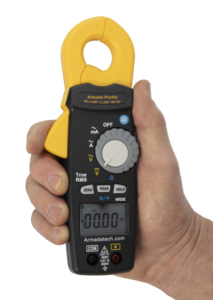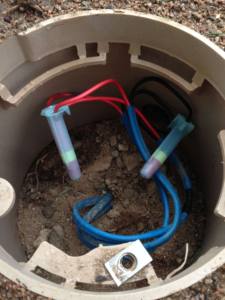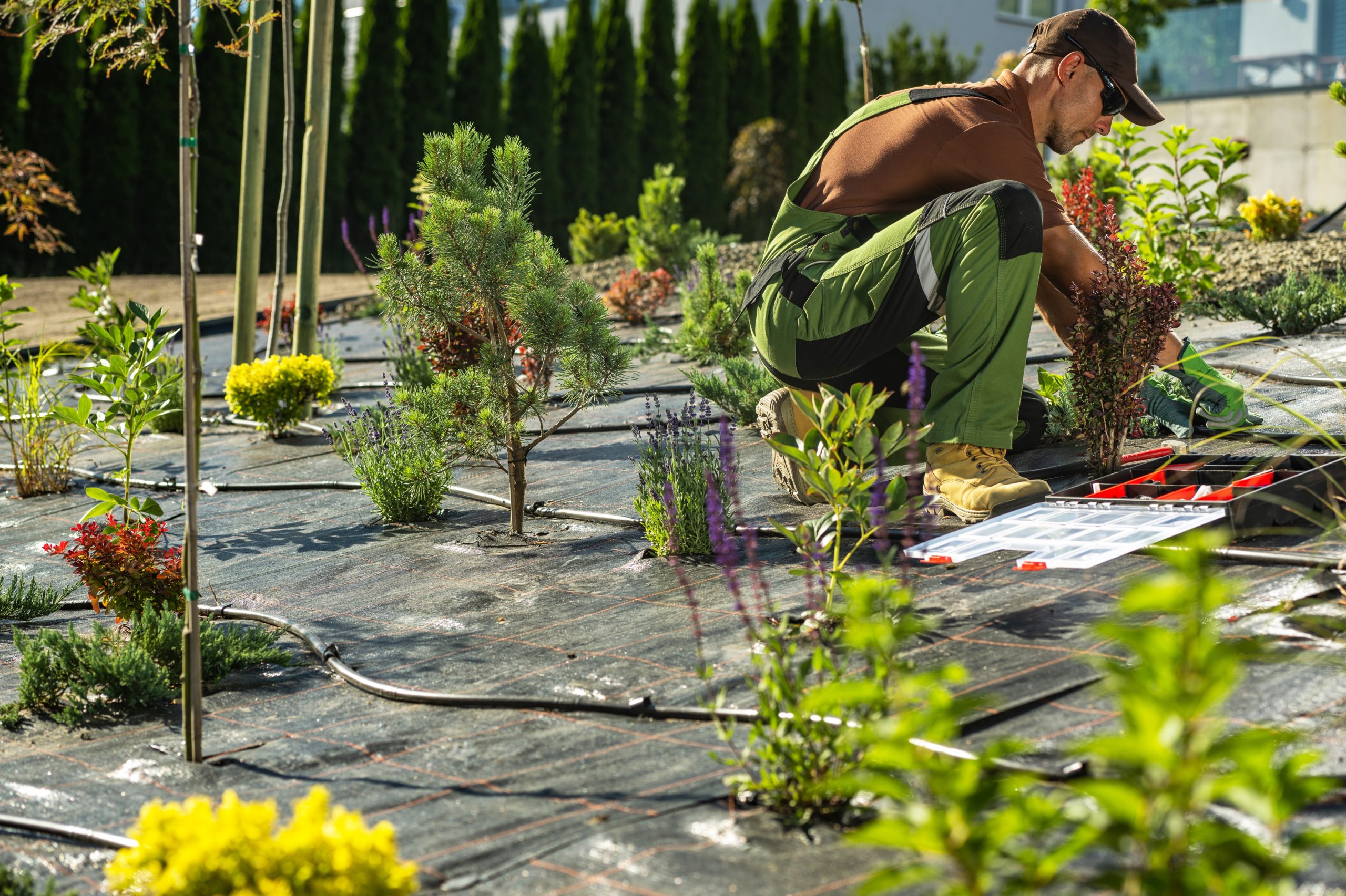As any experienced irrigation contractor knows, the right tools for the job are non-negotiable for efficient, effective work. Although 2-Wire technology differs between manufacturers, we argue that these tools are a universal requirement to service any 2-Wire system.
Clamp Meter
Say it with us. . . there is no substitute or alternative to a milliamp clamp meter if you service any 2-Wire system! A clamp meter’s unique design allows you to take precise decoder & line current measurements without disturbing wire splices. 2-Wire systems apply very-low power to decoders while in “standby” mode, (anywhere from 0.3-8.0 milliamps), so purchasing a model that is designed to read milliamps (AC) is very important.

The Armada Pro series is the gold standard for any 2-Wire contractor.
Like most things, you get what you pay for with clamp meters. The resolution of a quality milliamp clamp meter will give you insights into potential issues of single decoder that budget models cannot. With a clamp meter & the correct troubleshooting methods, finding a 2-Wire issue on any size site is as easy as taking a few measurements.
Spare 3M DBR Y/6’s (Waterproof Splices)
A properly-made, waterproof splice can mean the difference in a 2-Wire system that thrives for years or is damaged after a season. To cut costs & save time, contractors sometimes use simple wire nuts to make connections. Even in the driest of environments, low-lying valve boxes often fill with water during irrigation events. When using wire nuts or other inadequate connections, submerged splices quickly fill up with water, damaging both the decoder & the surrounding wire.
DBR Y/6’s are industry-accepted, watertight splices that keep water & moisture out of your wire path. Although having quality splice kits on-hand adds extra cost in the repair process, leaving the site knowing you’ve made a water-tight splice provides peace of mind & future-proofs the system.

A splice so beautiful, it brings tears to our eyes!
Wire Strippers & Lineman’s Pliers
In making proper connections, the tools used for making splices are almost as important as the splices themselves. Using wire strippers designed to strip the outer wire jacket only can prevent costly damage to the wires’ insulation. For this reason, knives are never recommended for stripping wire. To make the splices themselves, hand-twisting or twisting with a wire nut often results in loose splices. Using Lineman’s pliers, you can make more secure connections, especially when making a 3-way splice.
A Copy of the Manufacturer’s 2-Wire Specifications
Ok, so we are a bit biased here, but having a strong idea of any manufacturer’s 2-Wire specifications gives you an idea of warranty, useful life & existing job status. Repeated issues may indicate a mismatch between the installation & specification, including:
Are decoders failing yearly in the same location?
How does the grounding & surge protection look on site? Is it grounded at all? Does the grounding meet the manufacturer’s specifications for resistance currently?
Have you replaced the same controller many times?
What does the 2-Wire path current look like when compared to benchmark values?
Have you had decoder or solenoid issues from day 1?
Were the proper wire and wire splices used? Was the proper wire used?
Every manufacturer has different specifications, and having this knowledge handy can help you make an accurate assessment of the equipment’s useful life, especially when you inherit a job you did not install. Educating your customer on the true condition of their system can help prepare them for necessary improvements and preventative maintenance to prevent larger, costly irrigation emergencies in the future.
For more information, please contact us.

